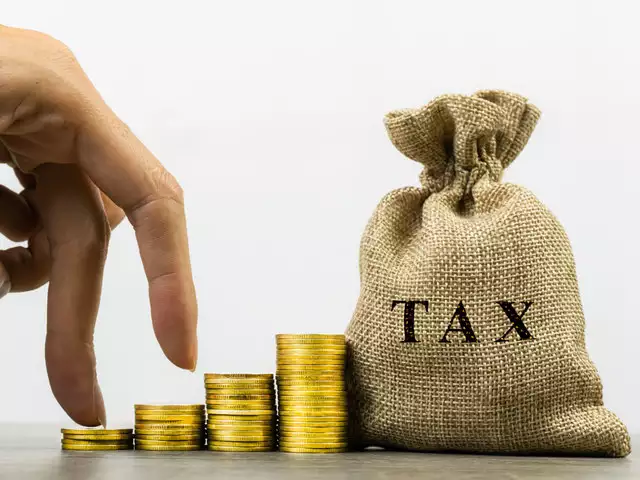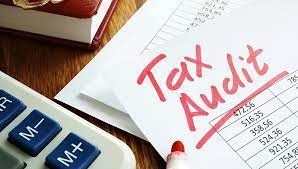Capital gains tax is a separate tax system from regular income tax that applies to profits made through investments. Learning the ins and outs of capital gains taxes is a crucial aspect of any investor’s education. However, the burden of paying capital gains taxes can be reduced with careful preparation, allowing you to keep more of your investment profits. This article will cover how to go about this. It will also discuss how much to pay in the long-term and short-term capital gains tax on stocks, and when or how to reduce or avoid the stock taxes.
When Do You Pay Capital Gains Tax on Stocks
A capital gain is what you get when you sell something for more than you paid for it (ACB). The ACB is the sum of all acquisition costs, such as commissions and legal fees. The money you make when you sell taxable investment assets like stocks is called the money you “realized.” Investments that haven’t been sold yet and “unrealized capital gains” aren’t taxed.
No matter how long someone holds on to shares of stock or how much their value goes up, the owner won’t have to pay taxes on the gains until the shares are sold. Long-term capital gains tax is income from the sale of assets or stocks that have been owned for more than a year. Under current U.S. federal tax policy, the tax rate on long-term capital gains is lower.
Depending on whether a taxpayer is in the 15% tax category or the 20% tax category, the current rates range from 0% to 20%. Most people pay more in taxes on their income than on their long-term capital gains. So, to take advantage of the lower tax rate on their profits, they have a financial reason to wait at least a year before selling their investments.
Read Also: TAX RETURN: What Is It, Status, Calculation & Amendment.
For day traders and others who like the speed and convenience of online trading, it’s important to remember that any profits made from buying and selling assets held for less than a year are taxed at a higher rate than investments held for more than a year.
You can use the total of your capital losses for the year to reduce the number of your taxable capital gains. In other words, you must pay taxes on the total amount of your capital gain. Annual net losses are limited to $3,000, but any excess must be carried over to future tax years.
How to Avoid Capital Gains Tax on Stocks
There are capital gains tax on stocks to pay if you decide to invest money and make a profit. But, there are a variety of legitimate strategies you can employ to avoid capital gains tax on stocks:
#1. Invest in Equities of Approved Small Companies and Hold onto Them
Qualified small business stock is stock issued by a company that meets the IRS’s criteria for a “qualified small business.” The goal of this deduction is to get investors to put money into SMEs. Gains from the sale of eligible stock may not have to be taxed up to $10 million.
Depending on when you bought the stock, you might not have to pay taxes on all or half of your capital gain. Definitely, you need to talk to a tax expert about this.
#2. Put Money Down in a Tax-Deferred Retirement Account
Stocks kept in a tax-deferred retirement plan like an IRA are not taxed when sold. With a regular IRA, your earnings are tax-deferred until retirement. Capital gains are deposited to a Roth IRA and may be withdrawn tax-free. Its growth is tax-free, making the Roth IRA a popular choice.
#3. Figure Out Your Tax Bracket
The realization of long-term capital gains, while taxed at a lower rate, can still result in a higher total tax bracket because the gains are included in calculating your adjusted gross income. Delaying the sale of stocks until a later date or considering bundling some deductions into the current year may be prudent if you are close to the top end of your usual federal income tax bracket. This would keep the tax rate from going up on those funds.
Short-Term Capital Gains Tax on Stocks
Gains that are made in a short amount of time are taxed at the taxpayer’s standard income tax rate. For everyone except the very wealthy, that’s a bigger hit than the long-term gains tax. A short-term gains tax is any profit made by selling capital assets or stocks that have been owned for less than a year. These profits are treated as regular income and taxed at the same rate as your other income.
Stocks’ Short-Term Capital Gains Tax: What You Need to Know
The short-term gain is the difference between how much the asset cost and how much it sold for in the end. Gains made in a short amount of time are taxed at the individual taxpayer’s highest marginal tax rate. Depending on their yearly income, investors will fall into one of several tax bands between 10% and 37% in 2022 and 2023.
It takes a short-term loss to cancel out a short-term gain. The most you can deduct for a capital loss is $3,000. Married couples filing separately can only deduct $1,500. You can use ordinary taxable income from future years to make up for capital losses that are more than $3,000. Gains and losses that happen in a short amount of time cancel each other out.
For example, if a taxpayer bought and sold Security A and Security B during the tax year and realized a gain of $5,000 on Security A but a loss of $3,000 on Security B, the net short-term gain is $2,000 ($5,000 minus $3,000). Use Form 8949, “Sales and Other Dispositions of Capital Assets,” to let the Internal Revenue Service know about any gains or losses from investments.
Read Also: CALIFORNIA INCOME TAX RATE 2023: Best Easy Guide
Short-term capital gains tax on stocks must be reported on the form, and there are instructions on how to do so. On top of that, the taxpayer is asked for personal information like their name and Social Security number (SSN). On the tax form, you have to fill out two parts. Profits from selling an asset that can be used right away go into the first bucket, while profits from long-term investments go into the second.
Use Form D, Capital Gains, and Losses, to report your capital gains and losses to the Internal Revenue Service. But it may also be necessary to fill out Form 8949 to explain the net gain or loss so that the subtotals can be moved to Schedule D.
Furthermore, you add the profit to your annual income. So, you may have to pay a higher tax rate on the short-term gain from your investment if it puts you in a higher tax bracket than you would have been otherwise. Before you file your taxes on your short-term capital gains, you should talk to an expert on taxes.
How Much Is the Capital Gains Tax on Stocks
The tax rate for long-term profits is 0% to 20%, while the tax rate for short-term profits is 10% to 37%. Taxes on capital gains are only taken out of the money made when an asset is sold for a profit. Whether you make short-term or long-term capital gains depends on how long you keep an asset.
The capital gains tax rate for most things held for more than a year is either 0%, 15%, or 20%. The same 10%, 12%, 22%, 24%, 35%, or 37% tax brackets that apply to ordinary income also apply to capital gains on assets held for a year or less.
Long-Term Capital Gains Tax on Stocks
Long-term capital gains tax is levied on assets or stocks sold after a year. Also, long-term capital gains are taxed at 0% or 15%, depending on income and filing status. Long-term capital gains usually have a lower tax rate.
During the 2023 tax year, depending on the taxpayer’s income, the long-term capital gains tax stocks rate is either 0%, 15%, or 20% of the profit. Every year, the various tax brackets are changed. Gains on investments held for more than a year are subject to a higher rate of taxation known as long-term gains.
The Tax Cuts and Jobs Act of 2017 maintained the same capital gains tax rates as before but raised the thresholds at which taxpayers would enter new tax brackets. Below are the details of the capital gains tax rates for the tax year 2023.
| Filing Status | 0% Rate | 15% Rate | 20% Rate |
| Single | Up to $45,625 | $45,626 – $492,200 | Over $492,200 |
| Married filing jointly | Up to $88,250 | $88,251 – $553,750 | Over $553,750 |
| Married filing separately | Up to $45,625 | $45,626 – $276,800 | Over $276,800 |
| Head of household | Up to $58,750 | $58,751 – $522,050 | Over $522,050 |
How to Reduce Capital Gains Tax on Stocks
In this article, we’ll talk about some ways you might be able to lower the amount of taxes you have to pay when you sell stocks and file your tax return. Find out how to pay the least amount of tax on your stock gains here.
#1. Consider Giving a Gift of Appreciated Stock
If you often give money to charity, this could be a good plan for you. Giving away stocks that have gone up in value is good for both you and the charity because the person who gets them won’t have to pay taxes on them. Your money will go even further if the organization uses it to buy something that will increase in value.
#2. Include Stock in Your Estate Plan
The best way to avoid paying the capital gains tax on stocks is to have no capital gain. You won’t have to worry about paying capital gains taxes on stocks that you never sell during your lifetime.
#3. Getting Capital Gains With a Single Plan
After taxes, investments are worth less because you get to keep less of your gains. Your retirement savings plan will be greatly helped if you can keep more of the money you’ve worked hard for.
What Is Capital Gains Tax on Stocks
When you sell an investment you’ve had for more than a year, you have to pay capital gains tax. Schedule D is used to keep track of the taxes related to financial transactions. Capital gains tax could cost you 0%, 15%, or 20% of your total taxable income for the year. Those with higher incomes pay higher rates.
Figure out how much you actually made. This is how much money was made from the sale after all fees and commissions were taken out. To figure out the gain or loss, subtract the amount you paid from the amount you got (how much you sold it for). A capital gain occurs when an asset is sold for more than it was purchased for.
You may be eligible to pay no tax on any net capital gain if your adjusted gross income is less than or equal to $41,675 (single or married filing separately), $83,350 (married filing jointly or qualifying surviving spouse), or $55,800 (head of household).
Is Capital Gains Tax 15% Or 20 %?
If your taxable income is more than $41,675 and less than $459,750, you will pay 15% of your capital gains. If you are married filing jointly or an eligible surviving spouse and your taxable income is more than $83,350 but less than $517,200, you will pay 15% on your capital gains.
Do I Have to Pay Capital Gains Tax Immediately?
Unrealized capital gains, which are gains on investments that have not yet been sold, are not taxed until the investments are sold. This implies that you won’t have to worry about paying taxes on your capital gains until you actually sell your investment. So, you won’t have to worry about paying capital gains taxes while your investment is still growing.
Is Capital Gains Tax 30%?
If the investment is sold, the payment must be made for this tax year. Long-term capital gains are taxed at 0%, 15%, or 20% of the profit, depending on the filer’s income, in 2022 and 2023. The cutoff points for income go up every year.
Conclusion
Capital gains taxes only apply to “capital assets” like stocks, bonds, digital assets like cryptocurrencies and NFTs, jewelry, coin collections, and real estate. Any investment that makes money after being held for more than a year must pay long-term capital gains tax. If the investor has only had the investment for a year or less, they have to pay short-term capital gains tax. The traditional income tax band of the taxpayer determines the short-term rates.
Related Articles
- How Not to Pay Taxes Legally: Detailed Guide
- WHAT IS COST BASIS? All You Need To Know
- HOW TO REDUCE TAXABLE INCOME: Best Simple Strategies!
- TAXABLE BROKERAGE ACCOUNT: Understanding Taxable Brokerage Account And How It Works
- HOW TO MAKE MONEY IN THE STOCK MARKET: Detailed Guide






